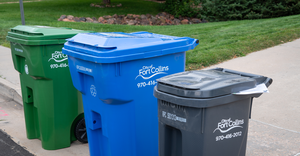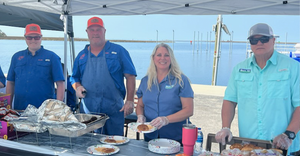Veolia’s Le Fournis Discusses Strategies to Advance Biogas to Energy Projects
Waste and water management corporation Veolia will soon take on the largest biomethane production facility in France using biogas from a non-hazardous waste storage facility.
Waste and water management corporation Veolia will soon take on the largest biomethane production facility in France using biogas from a non-hazardous waste storage facility.
Gwenaël Le Fournis, technical landfill expert at Veolia, discusses this project, recently commissioned in partnership with technology developer Waga and speaks of how it will help France reach approaching national energy targets.
Beyond this new Claye-Souilly project, Le Fournis speaks of other Veolia investments; finding the right offtake partners; and selecting technologies to achieve high biogas extraction rates and quality.
Waste360: Where does Veolia operate, and can you describe your work in some of these regions?
Le Fournis: We operate in France, Europe, and elsewhere internationally. For example, in Portugal we are involved in a project to transform municipal waste-derived carbon dioxide (CO2) into sustainable aviation fuels.
In the United-Kingdom Veolia developed solutions for its municipal customers that produce and use solid recovered fuel on 26 sites.
And in Indonesia we partner with Danone to help prevent pollution of ocean plastics through a recycling factory to process food-grade PET bottles.
Waste360: Tell us about the newest project in France. What will be Veolia’s role in operating it, and what’s your presence in France beyond this project?
Le Fournis: The Claye-Souilly project is one of four developed through a partnership between Veolia and Waga Energy. It will produce 120 gigawatts (GWh) of renewable gas annually that will be injected directly into the GRDF-operated network to provide energy for homes and businesses, and to decarbonize the transport sector.
Veolia is in charge of the biogas delivery meeting required quality and quantity for injection to the grid of the processed biomethane. We extract the biogas generated by the degradation of the organic matter disposed of in this facility, and we utilize it as soon as it’s captured.
Veolia already produces 1.6 terawatt-hours (TWh) of biogas in France, equivalent to 10% of the French biogas production target set out in the 2023 Multiannual Energy Plan (steering the energy transition in France). More generally, Veolia is building and operating biomethane plants all over the world. Recently, for example, we signed an agreement with TotalEnergies to produce biomethane from Veolia waste and water treatment facilities operating in more than 15 countries.
Waste360: Tell us about the industrial ecology hub, Claye-Souilly, that will house this new French biogas project.
Le Fournis: Claye-Souilly ecology hub is 289 hectares (about 714 acres) and receives and valorizes over 1.5 million tons of industrial nonhazardous waste each year. The hub employs 115 people and produces over 238 GWh of energy through biogas and biomethane production.
What attracted us was the good location and good timing. Claye-Souilly has been producing green electricity from its biogas since the late 1980's, thanks to several technologies replacements that are more efficient; however never [to work with] biomethane because technologies, regulations, and markets were not there at the time of previous plants renewals.
Waste360: Why does Veolia continue investing in these projects? What has been key to making them work?
Le Fournis: Many countries are eager to produce their own green gas. We can see that this type of project is very widely implementable.
When the waste management value is too low, we need to find the right partners to offtake biomethane at the right value. This is why, for instance and apart from the pure technology perspective, we also established a partnership with TotalEnergies to produce biomethane from Veolia waste and water treatment facilities operating around the world. We will provide expertise in the production and processing of biogas, and TotalEnergies will contribute its knowledge of the entire biomethane value chain.
Together we will co-invest in a portfolio of international projects, with the ambition to produce up to 1.5 TWh of biomethane from organic waste per year by 2025.
Waste360: What expertise is required to run a large biogas-to-energy plant?
Le Fournis: The process has to be carefully selected according to biogas quality and biomethane requirements. Afterwards all the conditions have to be maintained to keep the plant's performance.
With Claye-Souilly, we selected a specific process accepting a large range of biogas quality and which can guarantee the biomethane quality. This choice will help Veolia to maintain a high level of biogas extraction rate.
On top of other common processes, this one has a sophisticated nitrogen removal, through cryogenic distillation, which requires proper skills.
Waste360: What is most advantageous in investing in multiple biogas projects, and how do you build on your work?
Le Fournis: Having a means to foster climate change faster has been particularly advantageous. Having understood and established the ways that a business model can be sustainable in certain conditions helps make it duplicable. Size of Veolia helps to contemplate local duplication of its projects.
Waste360: What are Veolia’s future plans with regard to methane- to-power projects?
Le Fournis: Several projects are under studies globally. We'll be pleased to announce them as soon as their viability is confirmed.
Waste360: Are most of your biogas projects to make electricity, or do you produce much transportation fuel?
Le Fournis: We predominantly produce electricity. However, we also produce heat (e.g. the 6MW heating district network of Plessis Gassot in the Val-d'Oise department and Île-de-France region of France); or sale of gas for industrial purposes (production of bricks...); biomethane for injection in Hong Kong. For transportation fuel, we only developed a small unit in Claye-Souilly, which is still active.
Waste360: What is the Multiannual Energy Plan?
Le Fournis: It’s a strategic document for steering the energy transition in France. Instituted by the Energy Transition Law (TECV), it sets a trajectory for the energy mix, as well as "the priorities for action for the management of all forms of energy on the continental metropolitan territory, in order to achieve the national objectives set by the law."
This plan is built and periodically reviewed by the French government, both to comply with E.U. regulations, and with its own national targets.
Waste360: What’s the policy focus in France as it pertains to mitigating methane?
The E.U. directives, French regulations have helped mitigate methane emissions from landfills over the years through two main levers:
progressive policy for diversion of organic waste from municipal solid waste streams,
granting of long-term incentives for biogas energy recovery (either power or biomethane), incentivizing landfill operators to maximize the methane capture from their facilities.
About the Author
You May Also Like




